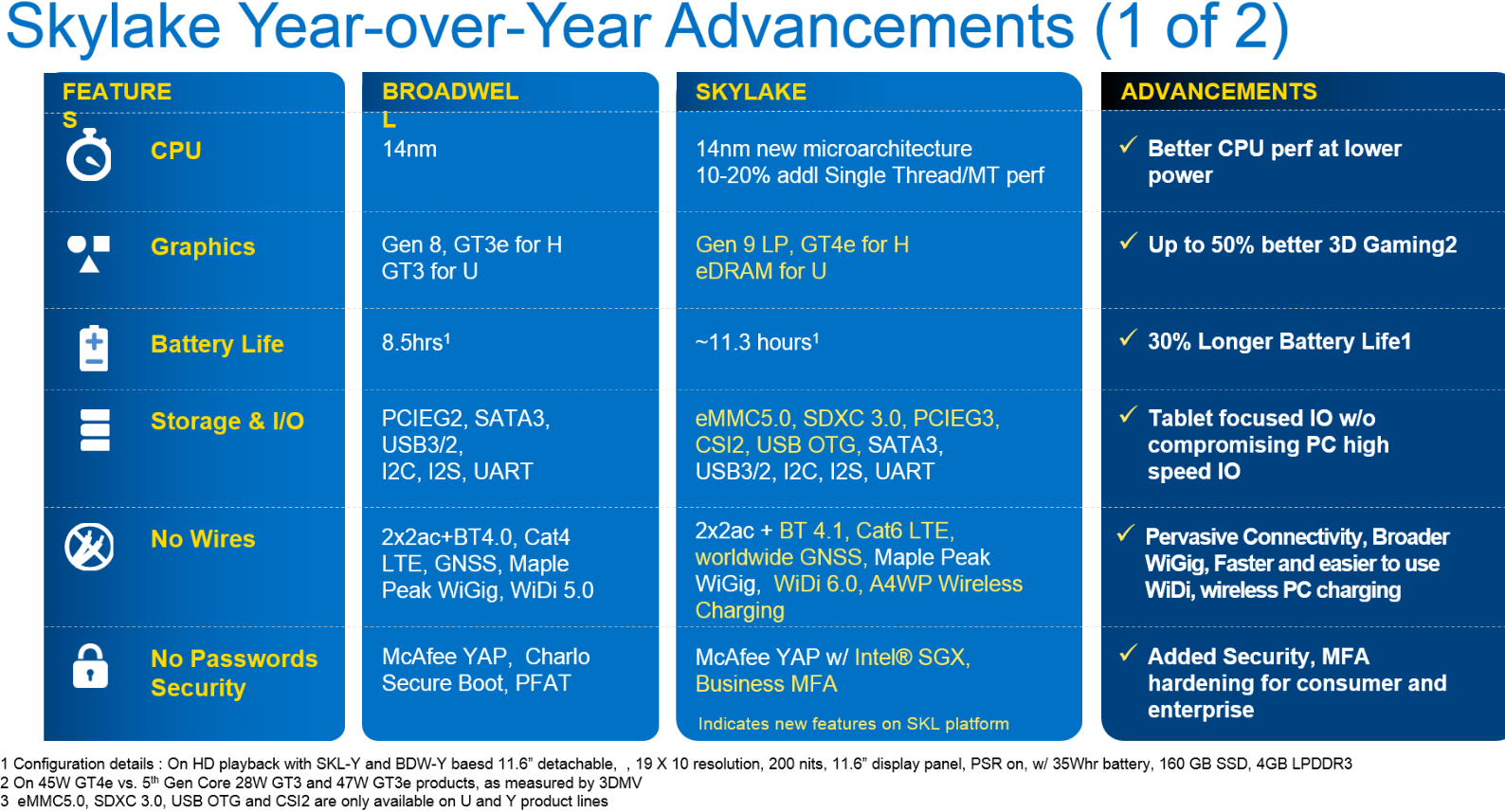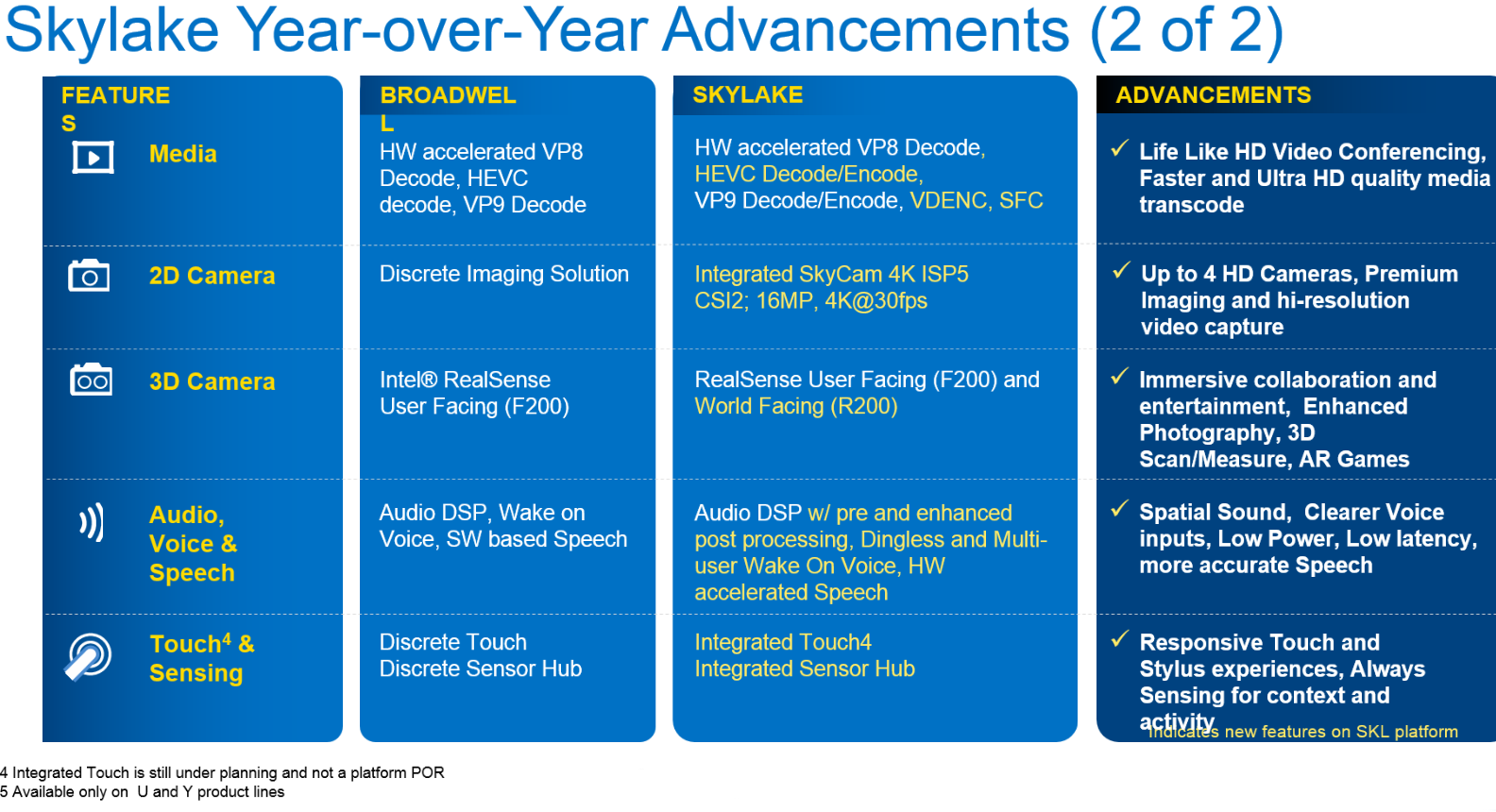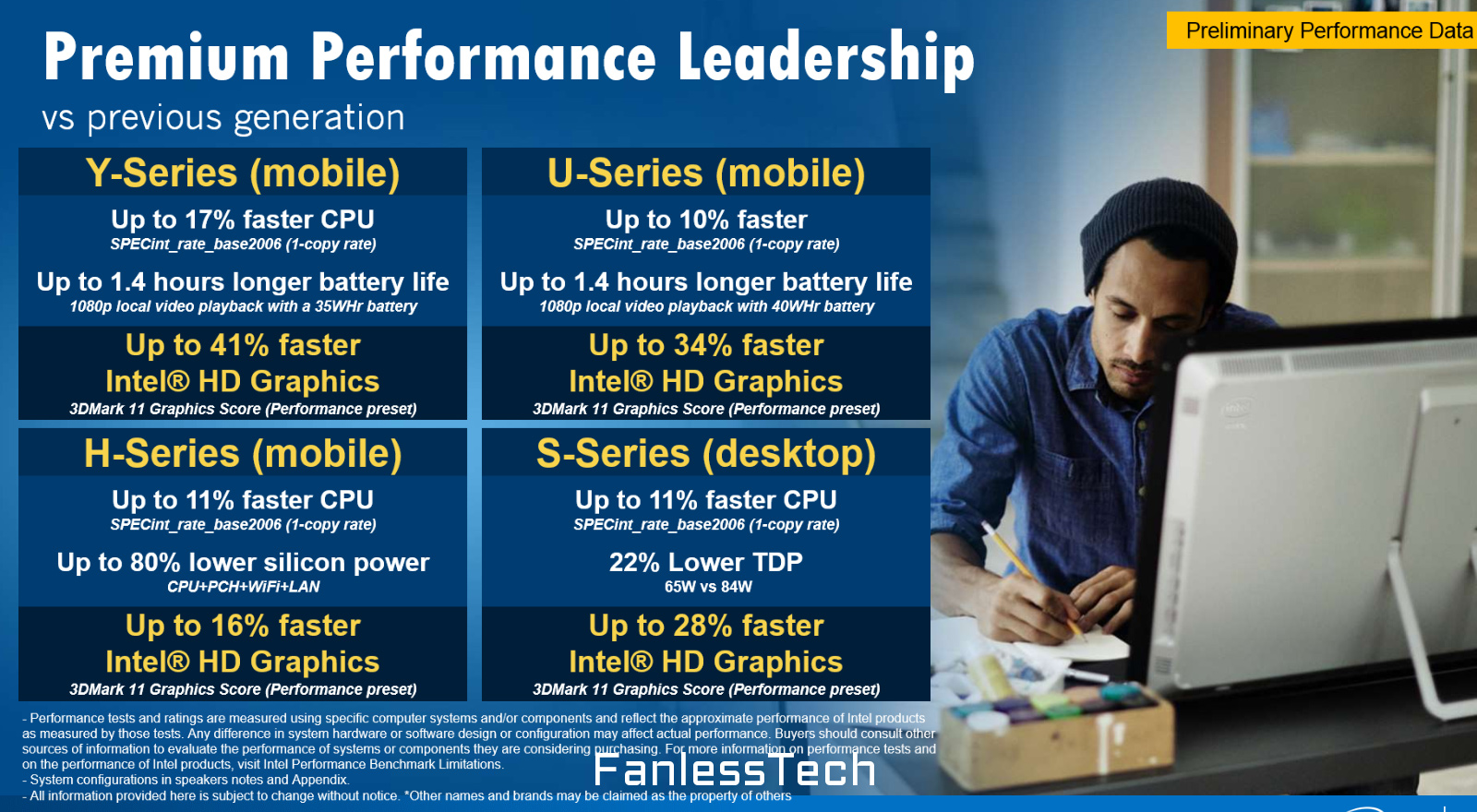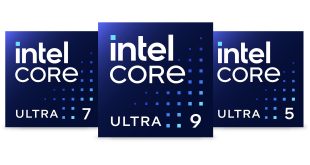It is not a secret that Intel Corp.’s upcoming “Skylake” processors will have a number of micro-architecture-related advantages over predecessors. Various leaks point to different kind of performance gains, but Intel itself, apparently, expects its new central processing units to be 10 – 20% faster than “Broadwell” products depending on application.
FanlessTech has published what looks like an official Intel “Skylake” platform overview for system makers and resellers. The document explains basic advantages the new central processing units and supporting platforms have over predecessors as well as give some additional understanding regarding technologies that are integrated into new desktop and notebook platforms from Intel.
One of Intel’s slide promises that the new processors based on the “Skylake” micro-architecture will offer 10 – 20 per cent higher performance in single-thread and multi-thread workloads compared to chips featuring “Broadwell” technology. Desktop CPUs are expected to be around 11 per cent faster than predecessors thanks to new micro-architecture, whereas ultra-low-power Core M mobile chips are projected to be 17 per cent faster than current-gen Core M offerings thanks to a combination of architectural and clock-rate advancements.
The upcoming “Skylake” processors will also feature Intel’s ninth-generation integrated graphics core (Intel Gen 9 LP) with a number of architectural enhancements as well as increased amount of execution units. The new integrated graphics adapter from Intel is expected to provide 16 – 41 per cent performance improvement over Gen 8 cores in 3DMark 11, according to an Intel’s slide.
Thanks to architectural advantages of microprocessors, new core-logic sets and a number of other improvements, mobile computers featuring “Skylake chips are also expected to have longer battery life than existing notebooks. Intel claims that certain “Skylake”-based hybrid PCs will be able to offer up to 11.3 hours of full-HD video playback on one charge.
Next-generation Intel Core M processors with integrated core-logic will finally offer tablet-focused input/output technologies, such as eMMC 5.0, SD XC 3.0, CSI2, USB OTG and so on. Previously makers of tablets and hybrids had to rely on PC interfaces when building their products with Core M inside, which compromised dimensions, battery life and features. Thanks to “Skylake-Y” chips, high-performance Intel-based tablets will now look and perform exactly like other slates featuring ARM-based system-on-chips.
Select mobile computers with new CPUs will also feature Rezence wireless charging, WiGig wireless docking capabilities as well as 4G/LTE cat. 6 modem. Systems powered by “Skylake” chips will also have a number of improvements when it comes to audio processing, 3D camera, touchscreen responsiveness, security and so on.
Intel plans to introduce enthusiast-class “Skylake” processors for desktops in early August, 2015. Mobile PCs featuring the new chips will hit the market in September – October timeframe.
Intel did not comment on the news-story.
Discuss on our Facebook page, HERE.
KitGuru Says: Intel’s “Skylake” platform is nothing but impressive, especially when it comes to mobile computing. However, it remains to be seen whether PC makers will actually release bold and innovative systems that take advantage of everything the new silicon from Intel has to offer.
 KitGuru KitGuru.net – Tech News | Hardware News | Hardware Reviews | IOS | Mobile | Gaming | Graphics Cards
KitGuru KitGuru.net – Tech News | Hardware News | Hardware Reviews | IOS | Mobile | Gaming | Graphics Cards






10-20% faster don’t make me laugh if the leaked benchmarks are to be believed and they do look legit we are looking at best case of 0-5% improvement, it not even worth mentioning it as a improvement anymore
the thing skylake has though is no IVR. Making it a good overclocker,
although 11% is a bit too high for a jump in desktops. the igpu is definetely stronger
The things is, they can get away with this as there is no competition even in 2016 with Zen coming out.
The 40% IPC improvement claim is still trailing behind Intel’s IPC unless AMD have some other strategies, Intel can’t be bothered with IPC improvements and can pour their money on battery and graphics.
you don’t know that, while yes removal of ivr and the return of bclk overclocking is great to hear, we have no evidence that it actually clocks better or even the same as haswell for that matter, we only have 2 samples which mean nothing, until it is released it can not be judged, not to mention every single intel chip before launch gets the amazing 5.0ghz on air with ridiculously low voltage rumor and till now not a single case was any real indication of the cpu actual potential, lets not forget the latest example which actually tops out at around 4,2 ghz which is quite pathetic my i7 860 can do the same
would you be able to give me a rough estimation of how much performance gain in terms of % from a 2600k clocked at 4.2ghz?
10-15%
Devil’s Canyon was already 10%, and in single-threaded workloads it was 15% thanks to the 4.4 boost, not to mention better multithreaded scaling. This will be 25+% faster than SandyBridge.
ipc is compared clockc for clock, people want to know what improvement comes from ipc and uarch updates not from clock boost that anyone can achieve on their own, haswell is not 15% faster ipc compared to sandy, haswell is not even 10% ahead in single thread benchmarks, look at cinebench there is only 8% ipc improvement clock for clock comparing haswell to sandy, sure if you buy into marketing it becomes 15% in some exceptional apps no one ever uses, while in real life difference is barely there, haswell is not even 25% ahead of my i7 860 nahelem in ipc, multithreading, with best case 5% real ipc improvements each gen, in most cases its more l;ike 1-2% improvement
40%, but architecturally. They havent count in hyperthreading + node shrinkage…
Fine bench is not the only benchmark and it should not be a baseline. It only tells you about one kind of workload.
Cinebench* god damn autocorrect.
worst case situation: none
say you had the best 2600k and the worst 6700k
the variances could mean no improvement
https://www.youtube.com/watch?v=wfoI-m-3vOk
well not sure why he used 4k resolution since the tests will be gpu limited. 1080p for all tests would have been a proper test.